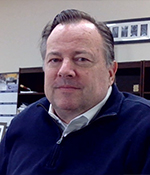FRIDAY | APRIL 3, 2020
1:30 PM - 2:30 PM
Room: Van Ness
An innovative learning place was designed and acknowledged by a MacConnell Award 2019 with its premise as, “Blurring the lines between ages and abilities, we will foster authentic learning and curricular exploration by expanding the definition of what a ‘place-based’ high school can be.” Since the school opened, leaders have seen a clear intrinsic motivation for students to use the abundance of technology tools available (analogue and digital). Leaders see intentional space utilization becoming dynamic rather than static. All intentional designs for both pedagogical change and building design change were measured post-occupancy. From both the students and educators perspectives, design of the built space impacts engagement performance (p <.0001). “Research shows that engagement, the time and energy students devote to educationally purposeful activities, is the best single predictor of their learning and personal development over time.” The paradigm shift to student-centered learning is changing the landscape of education across K-12. This panel will share how one district turned the opportunity to build a new high school into a model for an entire district. Items shared include: the overall visioning session, corresponding curricula and teacher mind-set changes, the processes involved, and how the new innovative building was designed to intentionally respond. In this visional learning environment, the teacher is metaphorically similar to an artist painting a colorful almost endless mural rather than planning a linear focus on ‘content.’ Both the subject matter and materials utilized are jointly selected through ownership of the student. Key pillars for learning in this school include common intentional language around supportive terminology, the collective for all stakeholders in planning, and high levels of peer-student collaboration, which has led to ownership of learning together. A B.O.L.D.TM protocol assisted district/campus leadership and educators in understanding and applying new teaching and learning processes utilizing a change process while building coherence providing the framework for collective action. Learners and educators thrive in an environment supporting abilities for building relationships, providing for socialization, and supporting creativity. It took a village.
Learning Objectives:
- Realize what learner profiles help establish a clear educational vision to drive architecture that enables identified and intentional changes for functional, social and emotional wellbeing needs.
- Determine the protocols for aligning “campus activation,” or professional development for educators aligning pedagogy with innovative learning environments’ designs – spatial orientations for educators helping build confidence in using ‘space as a tool’.
- Provide an early and ongoing relationship between Architecture and Interior Design allowing for spatially agile environments to fit described intentions.
- Measure using reliable and valid post-occupancy evaluation surveys to be sure design solutions increase student academic engagement levels – another measure of student success.






